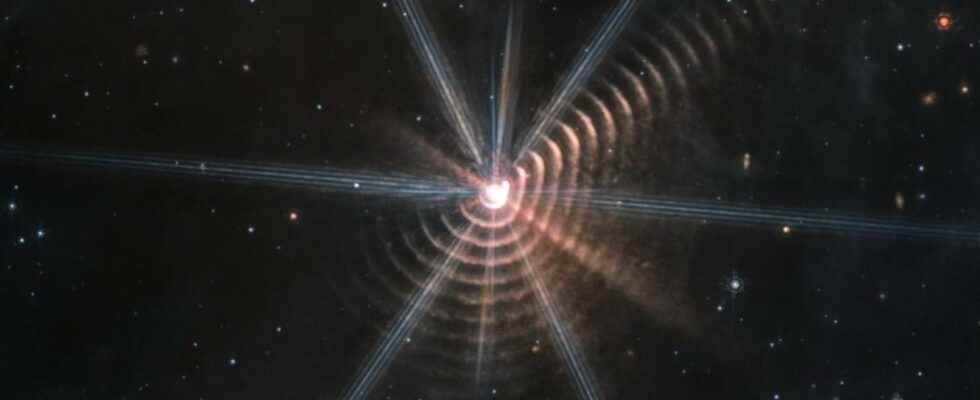Just like the telescope Hubble, the James Webb (JWST) can make contributions in many questions ofastrophysics and of cosmology. They are not limited to the study of the first galaxies or to the analysis of the chemical composition of atmospheres of exoplanets. We know, for example, that interstellar dust, which makes up about 1% of clouds dense and cold molecules is a key ingredient in the formation of stars and planets. However, it turns out that the various processes of production of this dust are not yet as well understood as cosmochemists and astrophysicists would like.
This is why, to see things more clearly, programs of study of double star systems known under the name of binaries Wolf-Rayet (WR) at winds in collision are already underway with the JWST. We know that the WR 140 and WR 137 systems are currently under theeye from James Webb Space Telescope as they are efficient dust generators in theUniverse current local and most importantly, it is believed, representative examples of other colliding wind binaries that probably existed in early galaxies.
An image taken by the JWST of WR 140 is currently in the spotlight. It is spectacular and it concerns a binary system already studied with the telescope Hubble which is about 5,600 light years from Solar system in the Milky Way when looking in the direction of the constellation of the Swan.
Binary has been studied for decades. So we have known for a while that WR 140 is a massive double star comprising a star Wolf-Rayet type WC7 and an O5 star, probably a blue supergiant. The two stars blow fast stellar winds (about 3,000 km/s) under the effect of the radiation pressure produced by luminosity of 103 at 104 times that of Sun. This results in losses of mass significant, about 10-5 and 10-6 solar masses/year.
Giant bubbles of dust
The fake image colors of the JWST, because taken in the infrared, exhibits the eight branches produced by the phenomenon of diffraction with the mirrors of the telescope (see on this phenomenon, the cult work on optics by Eugene Hecht). It is therefore an artefact, but this is not the case for the series of circular arcs surrounding the central binary on the image.
These are shells of gas which appear as rings because the edges of these shells, which are not perpendicular to the view of the observer, represent the radiation of “columns” of matter thicker on the line of sight.
The existence of these shells is not mysterious and it is understood how they are produced periodically every 7.94 years or so. About 20 rings are visible and, according to astrophysicists, the youngest was born in 2016. But how do they know?
This animation shows dust production in the WR 140 binary star system as the Wolf-Rayet star’s orbit approaches the O-type star and their stellar winds collide. Stronger winds from the Wolf-Rayet star blow behind the O star, and dust forms in its wake as the mixed stellar material cools. As the process repeats, the dust will form a shell. © NASA, ESA, and J. Olmsted (STScI)
The determination of the orbital parameters of the stars of WR 140 shows that they are on respective orbits quite eccentricso that they approach each other in a consistent way by reaching for one of them its periapsis (the shortest distance between them) approximately every 7.94 years precisely.
The collision between the stellar winds produced by the two stars is quite violent at this time, and then an expanding bubble of matter is born which, as it cools, will cause dust to condense. It is this dust which is heated by the radiation ultraviolet of the two young massive stars will then cool by radiating in the infrared, revealing the expanding shells to the JWST. We can thus see sorts of strata testifying to the past history for about 160 years of the binary.
Interested in what you just read?
